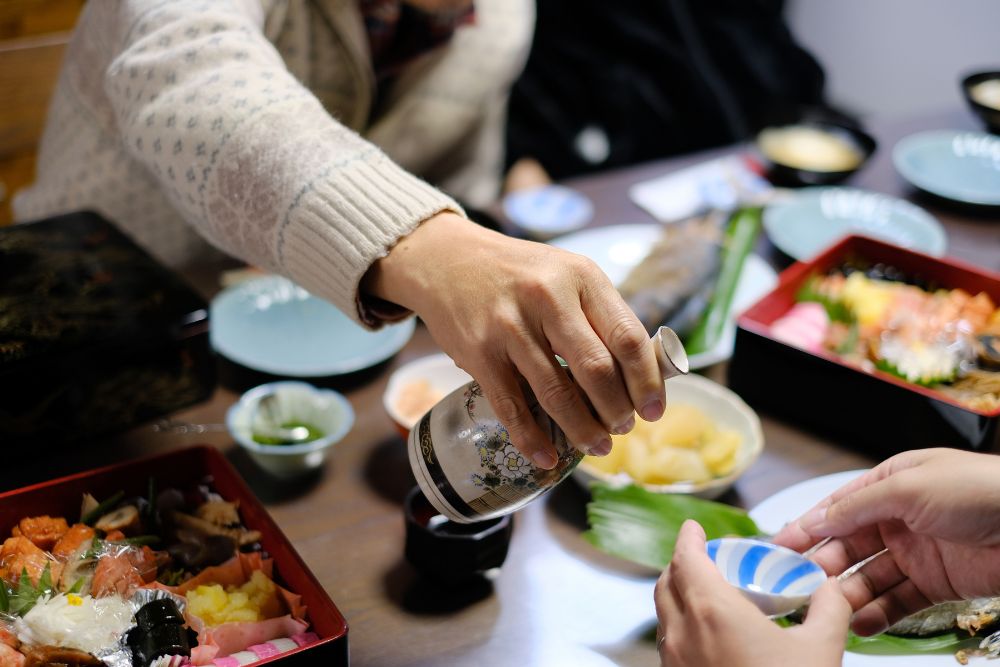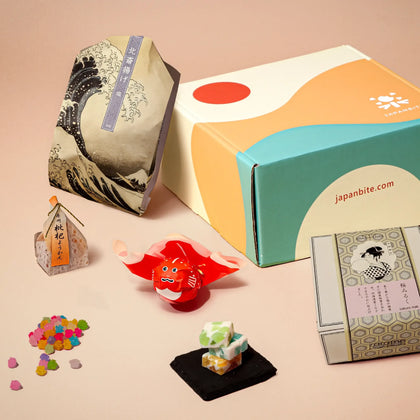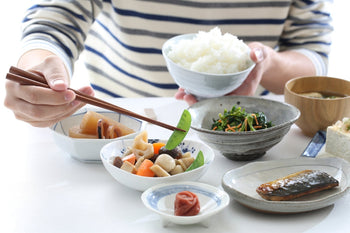

Japanese cuisine is renowned worldwide for its unique flavors, fresh ingredients, and health benefits. To truly understand what Japanese people eat, let's take a look at the main ingredients of Japanese cuisine, explore a typical Japanese meal, and discover the delightful variety of appetizers, main dishes, and desserts that make up their culinary culture.
Main Ingredients of Japanese Cuisine

Japanese cuisine is renowned for its meticulous attention to fresh, seasonal ingredients, which form the very foundation of its unique and flavorful dishes. The essence of Japanese cooking lies in its connection to nature's changing seasons, with each season offering a different bounty of ingredients that inspire chefs and home cooks alike.
Rice
One of the cornerstones of Japanese cuisine is rice, and it is not an exaggeration to say that it is the soul of many Japanese meals. It is crucial that rice is of the highest quality. Different parts of Japan are renowned for producing unique varieties of rice, each with its own flavor and texture. Short-grain Japonica rice is commonly used, and it's expertly prepared, often steamed to perfection, to accompany various dishes.
Fish
Fish is another key element in Japanese cuisine, and it takes on a central role in many traditional dishes. Japan's extensive coastline provides a rich source of seafood, and the Japanese are renowned for their expertise in handling and preparing fish. Sashimi, sushi, tempura, and grilled fish are just a few examples of how fish is celebrated in Japanese culinary traditions.
Soy Sauce
Soy sauce, known as "shoyu" in Japanese, is a fundamental seasoning that enhances the flavors of many dishes. It is made from fermented soybeans, wheat, salt, and water. There are various types of soy sauce, including light and dark varieties, each with its distinct flavor profile, and they are used in different culinary applications.
Miso
Miso, a fermented soybean paste, adds depth and complexity to soups and marinades. It comes in various colors and flavors, with white (shiro) miso being sweeter and lighter, and red (aka) miso offering a richer and deeper umami taste. Miso soup, a common Japanese breakfast staple, is a prime example of how this paste is used.
Seaweed
Seaweed, or "nori" in Japanese, is an integral part of Japanese cuisine. It is used to wrap sushi rolls and as a seasoning in various dishes. Seaweed is not only nutritious but also adds a unique oceanic flavor to many dishes, contributing to the umami taste that Japanese cuisine is known for.
Vegetables
Japanese cuisine places great emphasis on vegetables as well. Daikon radish, bamboo shoots, and a variety of mushrooms, such as shiitake and enoki, are commonly used in dishes. These vegetables are not just mere accompaniments but are often prepared to shine as standalone dishes or as integral components of a well-balanced meal.
Typical Japanese Meal

A typical Japanese meal is a balanced combination of rice, soup, and a variety of side dishes. The side dishes often include grilled or simmered fish, pickled vegetables (tsukemono), and vegetables in various forms. The meal is typically accompanied by a small bowl of miso soup, which is rich in umami flavors, and often some form of protein like tofu or meat.
Appetizer
Japanese appetizers are generally called "otsumami" or "zensai." While they may be skipped in home-cooked meals, they are commonly found in Japanese course meals and casual dining. The options include edamame, seasonal vegetable dishes, seaweed salads, stews, pickles, and grilled fish. In restaurants, sashimi and tempura may also be included. The ingredients can vary depending on the season and region. For example, cold tofu or chilled soups are often served in the summer, while warm dishes are more common in the winter.
Main Dish
The most common staple in Japanese home cooking is rice. While it can be eaten independently, it's usually consumed with "okazu," which are side dishes accompanying the rice. These side dishes range from grilled fish, stir-fries, fried foods, to stews. Fish is a very common ingredient in Japanese cuisine and is often grilled or simmered. Meat dishes like teriyaki chicken and ginger pork are also popular. For more casual meals, there are options like curry and rice bowl dishes (e.g., beef bowl, oyakodon). Noodle dishes like ramen, udon, and soba often serve as a complete meal in one bowl. Sushi, sashimi, tempura, and grilled meats are often enjoyed on special occasions or in restaurants. Although some people from outside Japan may believe that Japanese people eat sushi daily, sushi, sashimi, and tempura are generally not everyday foods but are reserved for special occasions. Typically, a Japanese meal consists of rice, okazu, and either miso soup or another kind of soup.
Dessert
Japanese desserts are known for their subtle sweetness and delicate flavors. Traditional options include mochi (rice cakes), red bean paste-filled treats like dorayaki and taiyaki, and matcha (green tea) flavored sweets. Western-style desserts like cake and ice cream have also found a place in modern Japanese cuisine.
Japanese desserts are known for their subtle sweetness and delicate flavors. Traditional options include mochi (rice cakes), red bean paste-filled treats like dorayaki and taiyaki, and matcha (green tea) flavored sweets. Western-style desserts like cake and ice cream have also found a place in modern Japanese cuisine.
Breakfast in Japan
Breakfast in Japan often consists of steamed rice, miso soup, grilled fish, pickles, and nori (seaweed). Natto (fermented soybeans) and tamagoyaki (rolled omelette) are also popular choices. While traditional breakfasts remain cherished, Western-style options like toast and eggs are becoming increasingly common in urban areas.
Lunch in Japan
Lunchtime in Japan offers a wide range of choices. Bento boxes filled with rice, fish, meat, and vegetables are a convenient and popular option. Ramen, udon, and soba noodle dishes are also widespread, served in broth with various toppings. Donburi, a bowl of rice topped with ingredients like tempura, pork cutlets, or raw fish, is another beloved lunchtime staple.
Dinner in Japan
Dinner is an opportunity for families and friends to come together. It often involves sharing dishes, such as sukiyaki, shabu-shabu (hot pot), or yakiniku (grilled meat). Sushi restaurants are also common choices for dinner outings. Izakayas, traditional Japanese pubs, offer an array of small plates perfect for sharing while enjoying drinks.
Check out this article to learn how to say “Breakfast”, Lunch and Dinner in Japanese”.
Where to Eat Japanese Food When Coming to Japan
If you're visiting Japan, there are plenty of opportunities to enjoy Japanese cuisine. The options vary depending on the location and your budget.
- Izakaya - Izakayas are casual places where you can enjoy Japanese food. They serve small dishes that pair well with alcohol. It's a great place to interact with locals.
- Sushi Restaurants - Sushi is iconic in Japan. Conveyor belt sushi is budget-friendly, but it's also worth trying a high-end sushi experience at least once.
- Ramen Shops - Ramen is loved all over Japan. The flavors and toppings differ from region to region, so try different types as you travel.
- Teishoku Restaurants & Home Cooking - These offer balanced meals on a single plate. There are also restaurants that specialize in home-cooked Japanese meals.
- High-end Ryotei & Kaiseki Cuisine - If budget allows, you can enjoy authentic Japanese cuisine at a ryotei or a restaurant that serves kaiseki, a traditional multi-course meal.
- Street Food - Don't miss out on takoyaki (octopus balls) or okonomiyaki (savory pancakes) available at stalls and festivals. You'll often find these at tourist spots or events.
- Supermarkets & Convenience Stores - If you're in a hurry or on a budget, supermarkets and convenience stores offer options like rice balls and bento boxes.
- University & Company Cafeteria - Some of them are opened to public and can become affordable alternatives during your stay in Japan.
- Cafes - You can enjoy Japanese desserts at coffee shops and dessert cafes. Matcha-flavored treats and wagashi are often on the menu.
Japan may be a small country, but it has a diverse range of regional foods and culinary cultures. So, wherever you go, new tastes and delicious meals await. Be sure to enjoy a wide range of places and dishes while you're here.
In summary, Japanese cuisine is a fascinating blend of tradition and innovation, focusing on fresh ingredients and delicate flavors. Whether you're enjoying a typical Japanese meal or seeking out Japanese food in your own neighborhood, it's a culinary experience that's sure to delight your taste buds.




